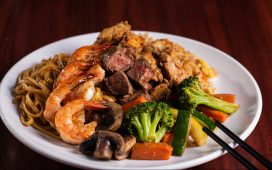A paleo diet is a nutritional regimen based on foods that were likely consumed during the Paleolithic period, which lasted from 2.5 million to 10,000 years ago.
A paleo diet generally consists of lean meats, fish, fruits, vegetables, nuts, and seeds, all of which were previously only available through hunting and gathering. In a paleo diet, you can try organic paleo cereal too. A paleo diet excludes foods that became popular around 10,000 years ago when farming began.
WHAT FOODS DO PEOPLE EAT ON THE PALEO DIET?
Meat, fish, poultry, (some) fruits, non-starchy vegetables, sweet potatoes and squash, nuts, seeds, grass-fed butter, and coconut are all good sources of protein are included in the paleo diet. Meat from pasture-fed or sustainably-raised animals that were able to engage in natural activities in a humane setting before slaughter is emphasized in the Paleo Diets.
THE PALEO DIET: PROS AND CONS
Pros:
- Increases Your Food Quality
The first advantage of a paleo diet is that it allows you to eat high-quality foods. This diet consists entirely of whole foods that have been harvested from nature. You may entirely replace packaged foods with high-quality whole food sources by simply following the food list or a paleo meal plan.
- Indirect Elimination Protocol
The diet’s second benefit is that it functions as an indirect detoxification strategy. It eliminates the consumption of potentially probiotic foods such as wheat, gluten, dairy, and soy since it forces you to eat only natural foods and eliminates highly processed foods from your diet. This allows you to track how your digestion and overall health feel when you’re not eating certain meals, as well as how you feel when you do.
- Increased insulin sensitivity
Because most paleo diets are low in carbs, the pancreas is often under less pressure to create insulin.
According to research, the paleo diet can reduce insulin secretion and hence enhance insulin efficiency. Insulin resistance, the driving force behind type 2 diabetes, is reduced too.
- Improved heart health
The paleo diet has been shown in several studies to be beneficial to heart health. Heart disease is one of the most prevalent diabetes-related problems, thus this is especially beneficial for diabetics.
In 2015, researchers discovered that when compared to a regular diet, the paleo diet dramatically reduced total cholesterol, LDL, triglycerides, and boosted HDL.
Cons:
- Can Minimize Variation
Because the diet is so strict, it can reduce variance in your diet over time. It’s simple to pick a few dishes and meals that suit you and consume them for months at a time. However, a lack of variety can result in nutrient inadequacies as well as boredom.
- Difficult to follow a diet routine
Diet removes full food groups like grains and legumes, putting you at risk of eating more meat than your body requires. Furthermore, because it excludes essential food groups (it’s a restrictive diet), it may be difficult to follow and maintain.
- Can Lead to Dogmatic Thinking
The diet’s third disadvantage is that it might lead to dogmatic thinking. This diet establishes clear boundaries between what is allowed and what is not.
While this makes it simple to follow, you may find yourself going overboard to avoid all items that aren’t classified as paleo. When you’re out to dinner with friends and family or in a circumstance where you have few options, this can have negative social consequences.







